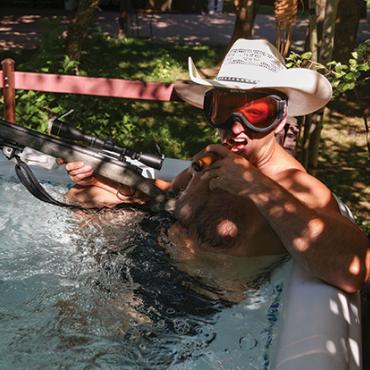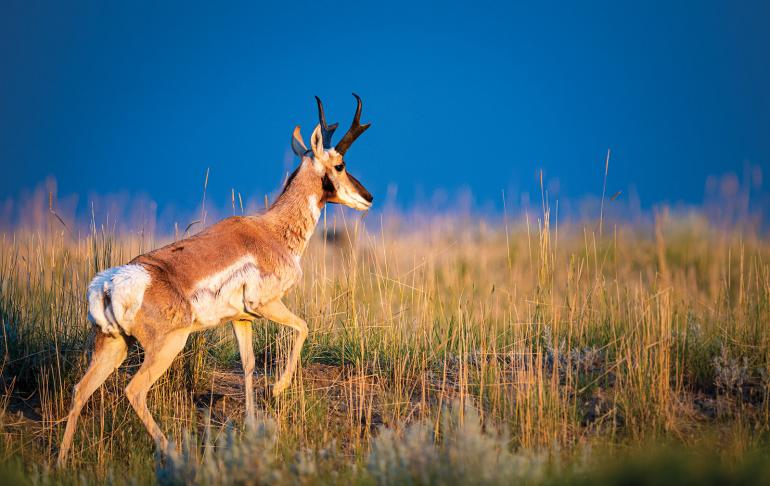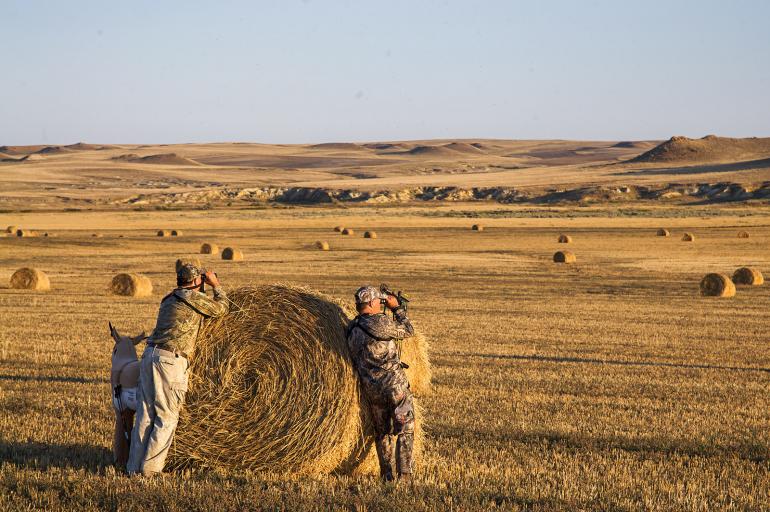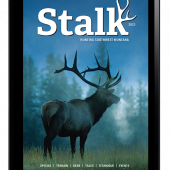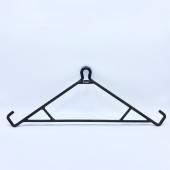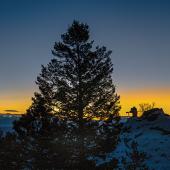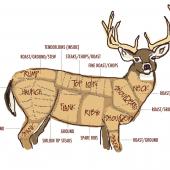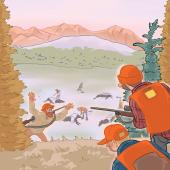Born to Run
Pursuing pronghorns on the prairie.
It was high noon when I spotted the herd. A dozen antelope, feeding into the wind, their burnt-orange hides stark and vivid against the drab prairie grasses. I raised my binos, but the distance was too great to put horns on any of them. No matter; my tag was good for either sex, and all I really cared about was the meat—that lean, clean meat that my friends and family treasure as much as I.
Sliding out of the truck and shouldering my pack, I set out for the long walk, zig-zagging toward the herd, always keeping some obstruction between us. I’d learned the hard way that with antelope, a good hunter takes no chances—they can spot movement over two miles away. One false move and I’d be busted, my stalk shot. So I took my time, avoiding their acute, watchful gaze, while enjoying a pleasant mid-day stroll across the beautiful Montana countryside. The big blue sky, that cool prairie breeze, warm sun on my face… regardless of the outcome of this hunt, there was nothing I’d rather be doing, no place I’d rather be.
Habitat
With keen eyesight as their primary defense mechanism, antelope prefer wide-open landscapes. Quality forage is essential, which is why they often hold near agricultural lands, augmenting their diet with wheat and alfalfa. But plenty of good grass grows among the sagebrush, and so antelope are quite happy out there, too, far from the nearest ag field. The key word there is “sagebrush”—although you’ll occasionally find them in grassy foothills and near river bottoms, their primary locale is open prairie country. Think of a Charlie Russell painting and you’ll have a good idea of where antelope tend to live.
(It should be noted here that the correct name for the species is “pronghorn.” When Lewis & Clark first encountered these animals, they noticed a resemblance to African antelope, and the name has stuck to this day.)
Behavior
With a top speed of 55mph, antelope can cover long distances in short periods of time, with little effort. A vast expanse of country that’s empty one day might be loaded with animals the next—and vice-versa. Don’t be afraid to drive around and spend plenty of time behind the glass. That said, if there’s good feed and no hunting pressure, a herd might linger in one spot all day, and even bed down there overnight. I’ve often located antelope at dusk and then camped out nearby, finding the same herd again at dawn.
That’s not to suggest that pronghorn are crepuscular, like deer and elk. While they do snooze during the day, they also get up and move around, taking multiple cat-naps rather than one long sleep session. Which, when combined with their high-visibility fur, is precisely what makes antelope-hunting so great: you can do it all day long. On opening day a few years ago, a buddy and I set out from camp on foot. From sunrise to sunset, we chased eight different herds. Ten hours and ten hard prairie miles later, we flopped into our chairs, flush from a fine day’s hunt. Beer never tasted so good.
Pronghorn may be herd animals, but herd size varies widely. Winter tends to see the largest herds, and in the summertime, smaller pods appear. Regardless of group size, you’ll typically see bucks in the back of the herd, often a ways off. For this reason, it’s important not to rush in too soon. Look around for an older, larger buck hanging out on his own—and thus avoid getting busted by that lone sentinel, who will alert the rest of the herd and send you back to the truck empty-handed.
Gear
Generally speaking, you’ll take longer shots than when hunting deer and elk. Keep your elevation holds on a laminated card taped to your stock, or in an accessible pocket. Use a smaller rifle—.243, .270, or 6.5 Creedmoor—or just a smaller bullet in a larger gun. I hunt exclusively with a .300 Win. Mag., which is a lot of gun, but I chamber a 130-grain bullet for antelope. It flies fast and flat, and allows me to carry a single rifle for different species. If you choose this route, be sure to keep a separate ballistics chart for your deer/elk rounds.
Quality binoculars are an obvious necessity. As anyone who’s crawled through cactus-laden sagebrush knows, so are kneepads and gloves. Light-colored concealment patterns will save the day, as well—pronghorn country is no place for woodland camo.
Bow vs. Rifle
Avid archery hunters find the antelope rut to be a unique and thrilling experience. As with other ungulates, rutting males tend to let their guard down. They also get aggressive and will charge other bucks, often from hundreds of yards away, which is where a good decoy comes in. But it’s still not easy; many archers go years without getting a shot off, let alone dropping an animal. Water is an important consideration all year, but even more so in the heat of late August and early September. Set up a blind near a known watering hole, open up a good book, and wait.
Rifle season makes for more productive hunting, and it can be every bit as challenging, especially in the late season as animals grow warier. Use the natural contours of the land to conceal yourself and get in close. Drive around, glass carefully, and when you spot a herd, plan your stalk before setting out—and be prepared to adjust your plan on the fly.
Pack-Out
Given their small size, field-dressed antelope can often be carried out whole. If you’ve got a strong back, consider buying a quality load-hauling backpack and do the job in a single trip. Otherwise, quarter the animal and make multiple trips, enjoying your leisurely prairie stroll. Either way, get the skin off and the meat in game bags quickly—I often do it right there at the kill site, on a small tarp that I stash in my pack. Keep the bags cool, in the shade or in a large cooler. Antelope meat is delicious but unforgiving—any mistakes made in the field will reveal themselves at the dinner table.
Regs
Pronghorn archery season starts in mid-August. Likewise, rifle opener comes a couple weeks before the general deer/elk season, which often means better weather. The downside is that all Montana antelope tags are by drawing only, with permit applications due by June 1. Read the FWP regulations carefully before deciding which districts to put in for.


